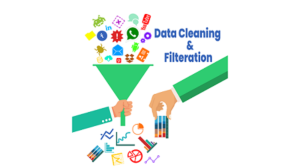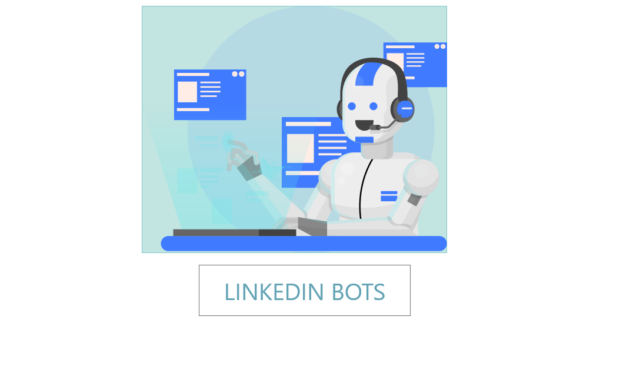The Ultimate Guide to Deep Integration
In the ever-evolving landscape of digital tools and software, businesses often find themselves grappling with the complexities of managing disparate systems. The familiar scenario of toggling between multiple applications, transferring data manually, and duplicating efforts can be not only time-consuming but also a significant bottleneck to productivity.
Imagine a transformative solution that goes beyond mere connectivity, where your software seamlessly converges with essential applications, creating a harmonious ecosystem. Welcome to the realm of deep integration – a paradigm that transcends traditional connections. Deep integration is more than just linking systems; it's a strategic fusion that revolutionizes the way information flows, ensuring a centralized hub where data thrives without the burden of manual entries.
In this exploration of deep integration, we will unravel the intricacies of a sophisticated synergy between software and applications. Gone are the days of laborious tasks; instead, envision a landscape where every interaction, every workflow, is a well-orchestrated symphony, propelling your business toward unparalleled efficiency and success.
Before diving deep into deep integrations, let’s understand the different types of platform integrations.
Different Types of Platform Integrations
Option A exemplifies a basic integration resembling iPaaS (Integration Platform as a Service). In this setup, filling out a form on the webinar app's registration page initiates the creation of a new contact record in the CRM. If the contact shares an email address with an existing record, the CRM simply replaces other fields with the newly provided data. Notably, there is no user interface (UI) or user experience (UX) integration, and governance is absent. The CRM platform company might remain unaware of the webinar app vendor, especially if there's an intermediary iPaaS. Integration practitioners should be cautious.
Option B showcases a more direct integration between the webinar app and the CRM. Data flows bidirectionally, enabling the addition of registrants to the CRM and enriching the webinar app's attendee profiles for a personalized experience. Users have the flexibility to determine whether the webinar app or the CRM takes precedence in updating data fields. Noteworthy features include the addition of detailed notes on a contact's timeline when a registrant attends the webinar, capturing information such as duration watched, questions asked, and a link to the recorded webinar. While the webinar app undergoes review and certification by the CRM platform company, it is still purchased independently.
Option C goes a step further, illustrating a deep integration between the webinar app and the CRM, expanding upon the foundation laid by Option B. In this scenario, the entire process of setting up and promoting a webinar occurs within the CRM platform's interface. Contributions and approvals are streamlined through a structured workflow process. Notably, sequences can be automatically triggered by micro-events during the webinar, such as a participant staying past the halfway point, submitting questions, or providing end-of-session content ratings. The webinar app is procured from the platform's marketplace for certified apps, relying on verified reviews from other users. Ongoing monitoring ensures the app's performance and compliance with GDPR regulations and requests are upheld.
What is Deep Integration?
Deep integration is not just about linking different software; it's about orchestrating a seamless collaboration between them, creating a dynamic synergy that goes beyond basic connectivity. Picture it as a sophisticated dance where your primary software and third-party applications move in perfect harmony, sharing information effortlessly.
At its core, deep integration transcends the conventional boundaries of data exchange. It's a strategic intertwining of systems, allowing them not just to communicate but to engage in a nuanced dialogue, enhancing the capabilities of your software manifold. This intricate connection isn't just about sharing data from one system to another; it's a transformative collaboration that unlocks a plethora of features and options, enriching your software experience.
Deep integration is the art of unifying diverse applications into a cohesive ecosystem, where the seamless flow of information becomes a catalyst for enhanced functionality and unparalleled efficiency. So, bid farewell to the limitations of standalone software and welcome a new era where your tools work in concert, providing you with a comprehensive and powerful toolkit for success.
Why Use Deep Integrations?
Deep integrations offer several compelling advantages that make them valuable for businesses seeking to optimize their workflows, enhance productivity, and streamline operations. Here are key reasons why businesses opt for deep integrations:
Seamless Workflow Automation:
-
Deep integrations automate complex workflows, reducing manual intervention and minimizing the risk of errors.
-
Tasks that once required manual data entry or switching between applications can be seamlessly orchestrated through integrated systems.
Enhanced Efficiency:
-
By eliminating silos and facilitating smooth communication between different software, deep integrations enhance overall operational efficiency.
-
Users can access and manipulate data from various applications within a centralized environment, eliminating the need to navigate between multiple platforms.
Real-time Data Syncing:
-
Deep integrations often enable real-time data syncing between connected systems. This ensures that information is up-to-date across all platforms, reducing discrepancies and enhancing accuracy.
-
Users can make data-driven decisions with confidence, relying on the most current and synchronized information.
Comprehensive Insights:
-
Integrating diverse systems provides a holistic view of business operations. Data from different sources converges, offering comprehensive insights that contribute to informed decision-making.
-
Businesses can leverage integrated analytics to gain a deeper understanding of customer behavior, market trends, and overall performance.
Improved Customer Experience:
-
Deep integrations contribute to a seamless customer experience by ensuring that customer data is consistently updated and accessible across various touchpoints.
-
This leads to better customer service, as teams have a comprehensive view of customer interactions, preferences, and history.
Flexibility and Scalability:
-
Deep integrations offer flexibility, allowing businesses to customize and adapt their software ecosystem to changing needs.
-
As businesses grow, deep integrations scale accordingly, accommodating new applications and technologies seamlessly.
Cost Savings:
-
Automation and efficiency gains resulting from deep integrations can lead to cost savings. Reduced manual labor, minimized errors, and optimized resource allocation contribute to a more cost-effective operation.
Competitive Advantage:
-
Businesses with deep integrations often gain a competitive edge by responding more swiftly to market changes, staying technologically agile, and offering superior services through a well-connected ecosystem.
Conclusion
Deep integration is the transformative force rewriting how businesses engage with their digital landscapes. This guide navigates the complexities of integrated systems, envisioning a future where every interaction and workflow is a well-orchestrated symphony, propelling businesses toward unprecedented efficiency.
Before exploring the nuances of deep integration, we dissected different platform integration types, from basic iPaaS connections to advanced orchestration like Option C. Deep integration, as uncovered, is not just about linking software; it's an art form, transcending data exchange to become a transformative collaboration unlocking myriad features.
Essentially, deep integration unifies diverse applications into a cohesive ecosystem, where information flow catalyzes enhanced functionality. It marks a departure from standalone software limitations, welcoming an era where tools synergize for comprehensive success.
Why embrace deep integrations? The reasons are compelling – from seamless automation to enhanced efficiency, real-time data syncing, and a competitive edge. Deep integration becomes the cornerstone of a digital landscape crafting a narrative of unparalleled success in the evolving digital era. As businesses step into this orchestrated future, let the resonance of deep integration be the guiding melody for unparalleled efficiency and innovation.






